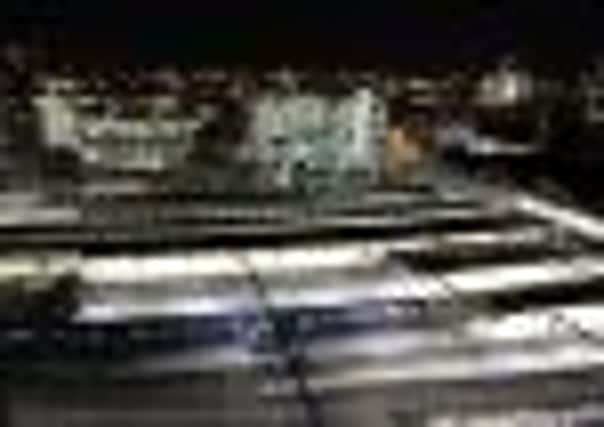Ben Stafford: We must have relief from the light pollution wrecking our view of the superb night sky


But sadly, in all too many places, it could equally well describe night skies where orange sodium lamps ensure that the heavens retain a weird fiery glow throughout the hours of darkness. This artificial copper-coloured blanket, I suspect, brings little delight to shepherds or anyone else.
One obvious effect of light pollution is that it makes it impossible for many of us to appreciate the wonderful celestial light show above us every night – far too few of us are seeing stars.
Advertisement
Hide AdAdvertisement
Hide AdOf course, the extent to which artificial light shrouds your view of the night sky depends on where you are.
From my parents’ garden in north Leeds, on a clear night I might see a reasonable number of stars, although the glow from the city centre is never far away.
In the centre itself, I would be lucky to see any stars at all, as that glow combines with the lights of buildings and traffic to snuff out even the brightest spark above.
But if I climbed up to Simon’s Seat above Bolton Abbey (which I’m not recommending as a nocturnal pursuit – you might end up buried to your neck in a peat bog – but it illustrates a point) I could enjoy an overwhelming starry spectacle above alongside a carpet of darkness below, studded with the homely twinkling lights of farms, villages and towns.
Advertisement
Hide AdAdvertisement
Hide AdSo what, you might say. Does it matter whether we can see a few stars?
Well, we at the Campaign to Protect Rural England think it does and, with our friends at the British Astronomical Association’s Campaign for Dark Skies, we are now encouraging people to count the stars, to give us an idea of where light pollution is a big problem, and where we can still enjoy dark and starry skies.
Back, first, to why it matters. Many might question whether, among the list of priorities for protecting and enhancing our environment, dark skies deserve much attention. There are, though, many reasons to strive for them.
The first is simply that a starry night sky is breathtakingly beautiful; the inspiration of poets and lovers down the ages. A deep midnight blue sky studded with glittering white stars and frosted by the gauze of the Milky Way is one of nature’s great spectacles and, if we can limit light pollution, it could be available to anyone, anywhere, simply by looking up.
Advertisement
Hide AdAdvertisement
Hide AdThere are also good practical reasons to want darker skies. There is evidence that light pollution has impacts on nature, disrupting the life cycles of many creatures. Whether it is migrating birds that navigate by the stars crashing into buildings whose lights blaze needlessly throughout the night or, further afield, baby turtles that, accustomed to guiding themselves to the sea by the light of the moon, crawl instead towards the neon lights of beachside strips, too much light in the wrong place can be bad for wildlife.
It can also be bad for people. A CPRE survey in 2010 showed that more than eight in 10 people had their view of the night sky affected by light pollution, but the impacts went beyond being deprived of the beauty of the stars. Almost half of those responding said their sleep had been disrupted by excess artificial lighting, causing real misery in many cases.
And what about money? Shining lights into the sky, rather than on to the ground where they are needed costs, and wastes, the money of cash-strapped councils. It is also an exasperating waste of energy, and contributes to the emissions that cause global warming.
So what can be done to tackle light pollution and restore the spectacle of the starry night sky? Thankfully, there are solutions, many quite straightforward. Switching off lights is a good place to start.
Advertisement
Hide AdAdvertisement
Hide AdThere is no reason why many office and commercial buildings should have their lights blazing through the night; flicking the switch is easy and painless, and will save money. Councils can also switch off or dim lights where they are not needed, or at particular times of night. Of course it is vital that, in doing this, they make sure they will not compromise safety for road users and pedestrians.
Re-designing lighting so it shines down to where it is needed rather than up to where it is not also makes obvious sense. A number of councils are already doing this. Earlier, I mentioned Leeds, and the council there is in the process of replacing approximately 80,000 street lights throughout the city. They have also trialled dimming of lights in some places, and the response from residents suggested most did not feel such changes would increase road accidents or crime.
So there are answers to light pollution, and ways to bring the stars back into our lives. But we need more evidence to persuade more councils, and the Government, to act. That’s where the Star Count comes in. From today until January 27, we are asking people to count the number of stars they can see within the constellation of Orion.
The results will help us create a 2012 Star Count map, illustrating how light pollution is affecting the view of the night sky across the UK, and giving us the information to strengthen our campaign. It’s quick and easy to do the Star Count, and we’d love you to take part! For information on how to do so, go to www.cpre.org.uk/starcount. Thank you.